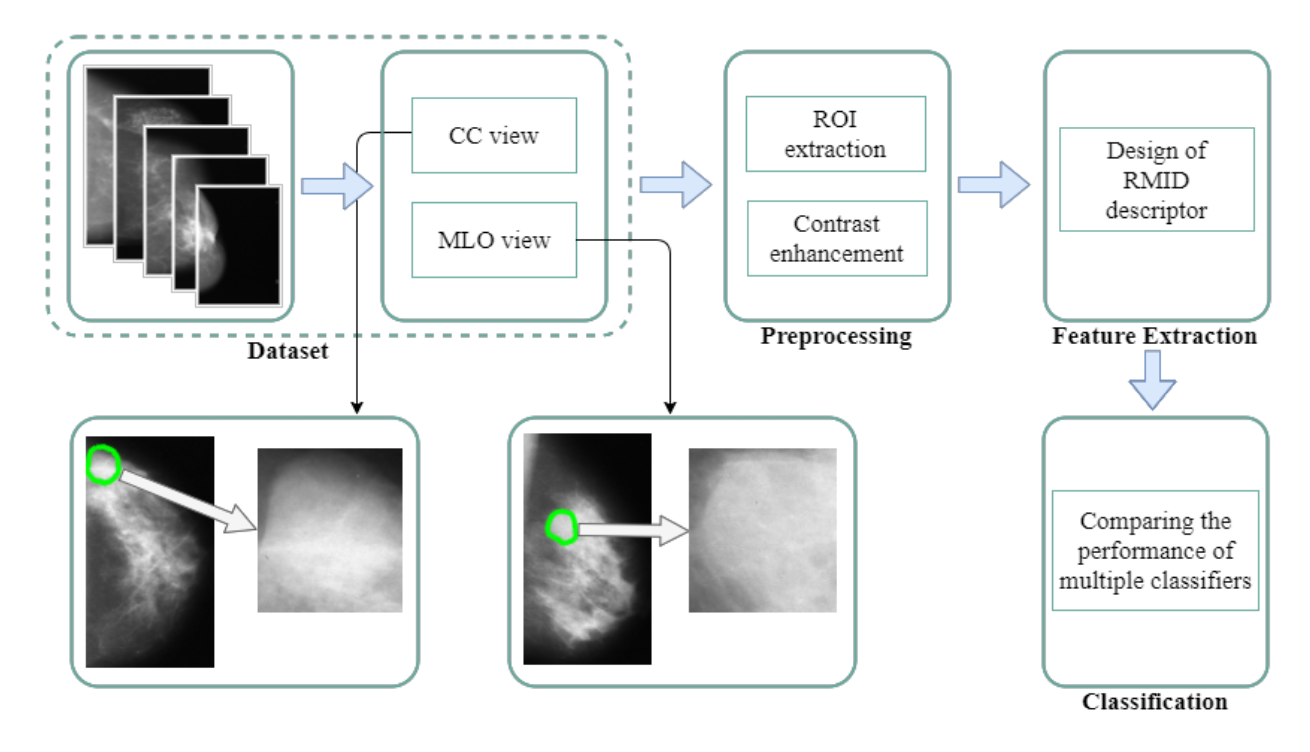
ABSTRACT: We discuss our most current developments in computer-aided mammography analysis. Standard, all-purpose algorithms are commonly used for mammographic picture analysis. We highlight the drawbacks of this strategy and demonstrate how a different, physics-model-based strategy can be created to calibrate the mammographic imaging procedure. This enables us to objectively assess the breast tissue at each and every pixel. For the current experimental framework, we discovered that the proposed RMID outperform spreviously published studies employing convolution neural networks and the manually created histogram techniques Histogram of Gradient Divergence (HGD) and Histogram of Oriented Gradient (HOG), according to the area under the ROC curve. (AUC) (CNN). Additionally, we discovered that utilising only the cardio caudal (CC) view yielded the best AUC value (0.986), as opposed to employing just the medio lateral oblique (MLO) view (0.738), or combining the two views (0.838). The advantage of CC vision over MLO in terms of improved mammography [49] mass categorization is thus demonstrated by these results.
Keywords: Mammogram image, categorization, picture descriptor, breast cancer
